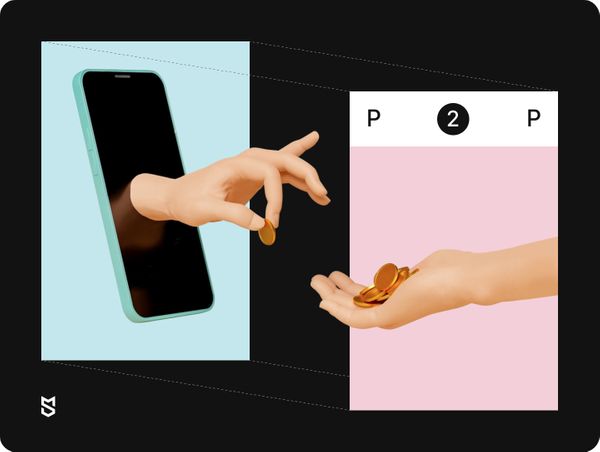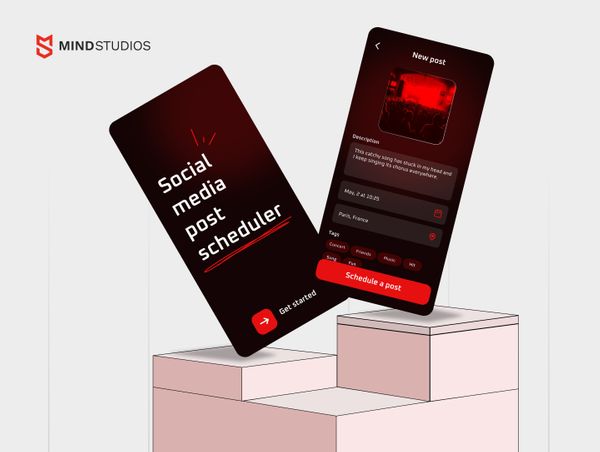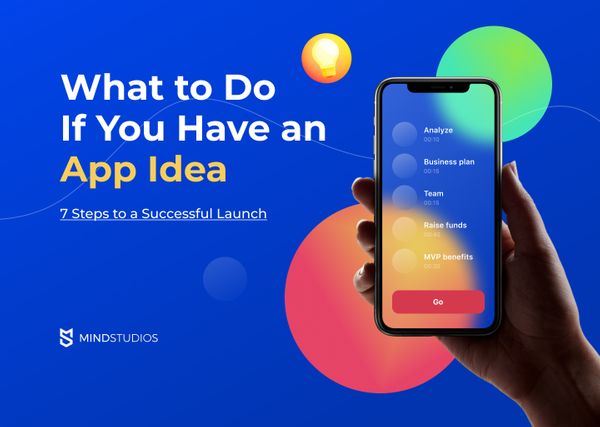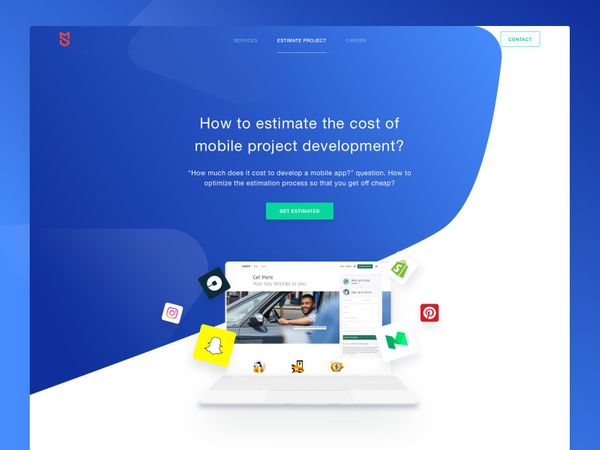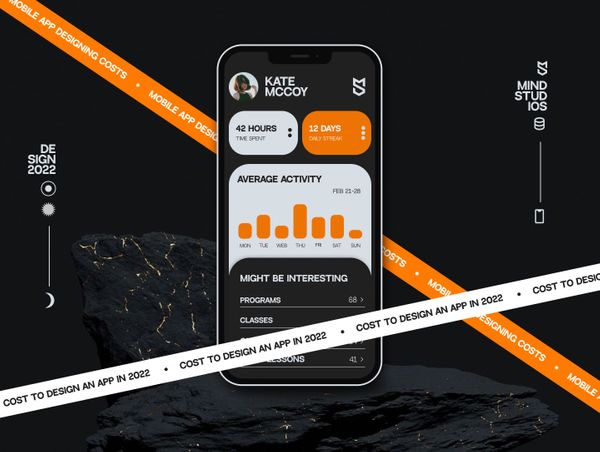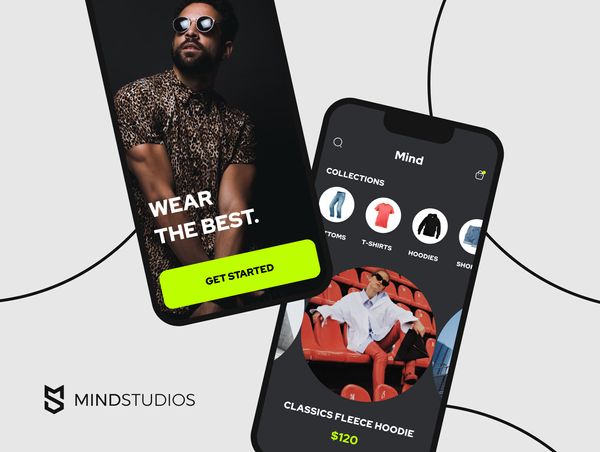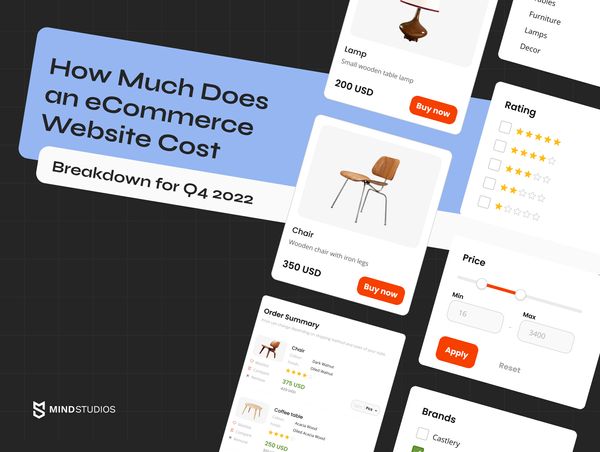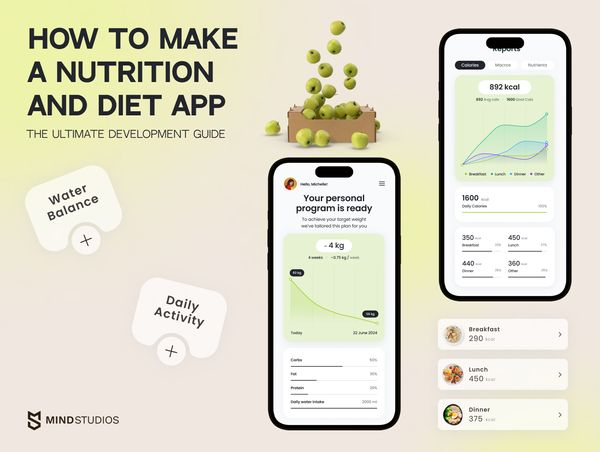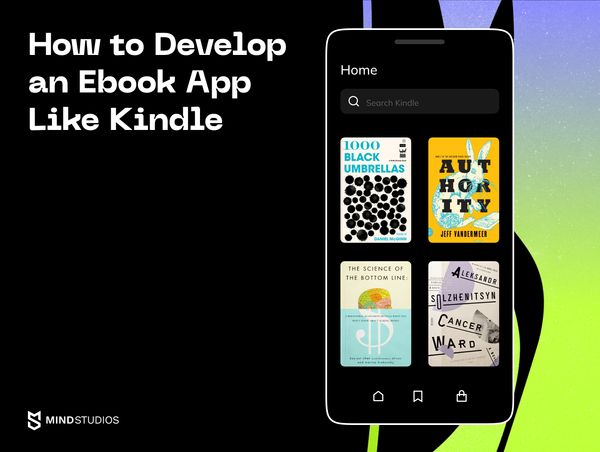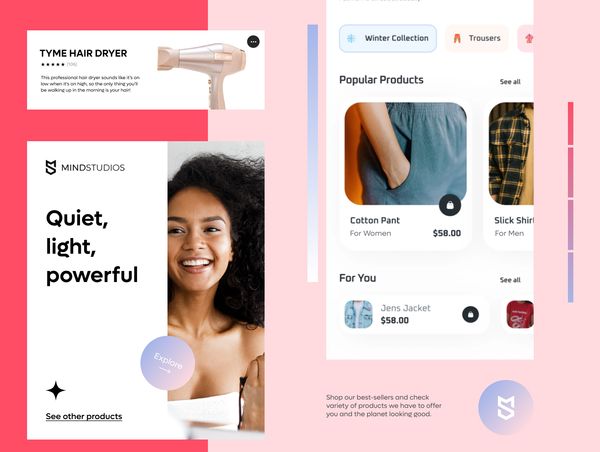
In the early 2000s, we were just starting to learn what an online marketplace is. Now, these platforms account for an astounding 62.5% of all online global spendings — and the number keeps growing.
Businesses choose online marketplaces because they relieve them of the hassle of running physical stores or investing a fortune in marketing. Consumers choose to shop there because buying everything from one place saves time. So, it’s no wonder that according to OC&C’s report, by 2025 spending through top online marketplaces will overtake the majority of retail and travel e-commerce outlets.
If you’re thinking about whether you should build a marketplace app, the almost monopolistic success of such giants as Amazon, eBay and Etsy can be intimidating. However, as a development company with numerous successful apps in our portfolio, we can assure you that it’s a viable idea if you choose the right team to do the job.
In this article, we share useful tips on how to create a marketplace app like eBay or Etsy — all based on our 9-year experience in building mobile apps and eCommerce platforms in particular.
What is an online marketplace app & what objectives does it meet
In short, a marketplace is a mediator, a link between sellers and buyers. Basically, it’s a digital analog of a department store: an online marketplace also sells various goods and services from different vendors, offering benefits like discounts, and providing secure money transactions — all in one place.
The main objective of a marketplace is to facilitate effective and seamless cooperation between buyers and sellers. However, there are a few other goals online marketplaces assist with. These include:
- providing the vendors with an opportunity to reach a wide audience of prospective buyers
- serving as a tool to promote the goods and services by taking on the responsibility for the marketing and management part
- increasing business efficiency and revenue through automation of the trading processes
- turning shopping into a high-speed and effortless experience for the consumers
The main rule of modern marketing is to sell so that the consumer can buy without thinking about it. To follow this rule, a marketplace should be convenient and easy to use. People are unlikely to sit down and learn how to use a complex platform before buying something. The ideal for the average consumer is to purchase everything in one click.
Ultimately, the objective of any marketplace is marketing. This is quite obvious because, in order to make money on transactions, actual purchases are needed. For this, you need to draw in buyers, who want a good deal, and sellers, who wish to bring home the bacon.
Core types of marketplaces
There are three main ways to categorize marketplaces, which include platform types by the target audience, focus, and management approach. Let’s see how they differ.
1. Types of marketplaces by target audience
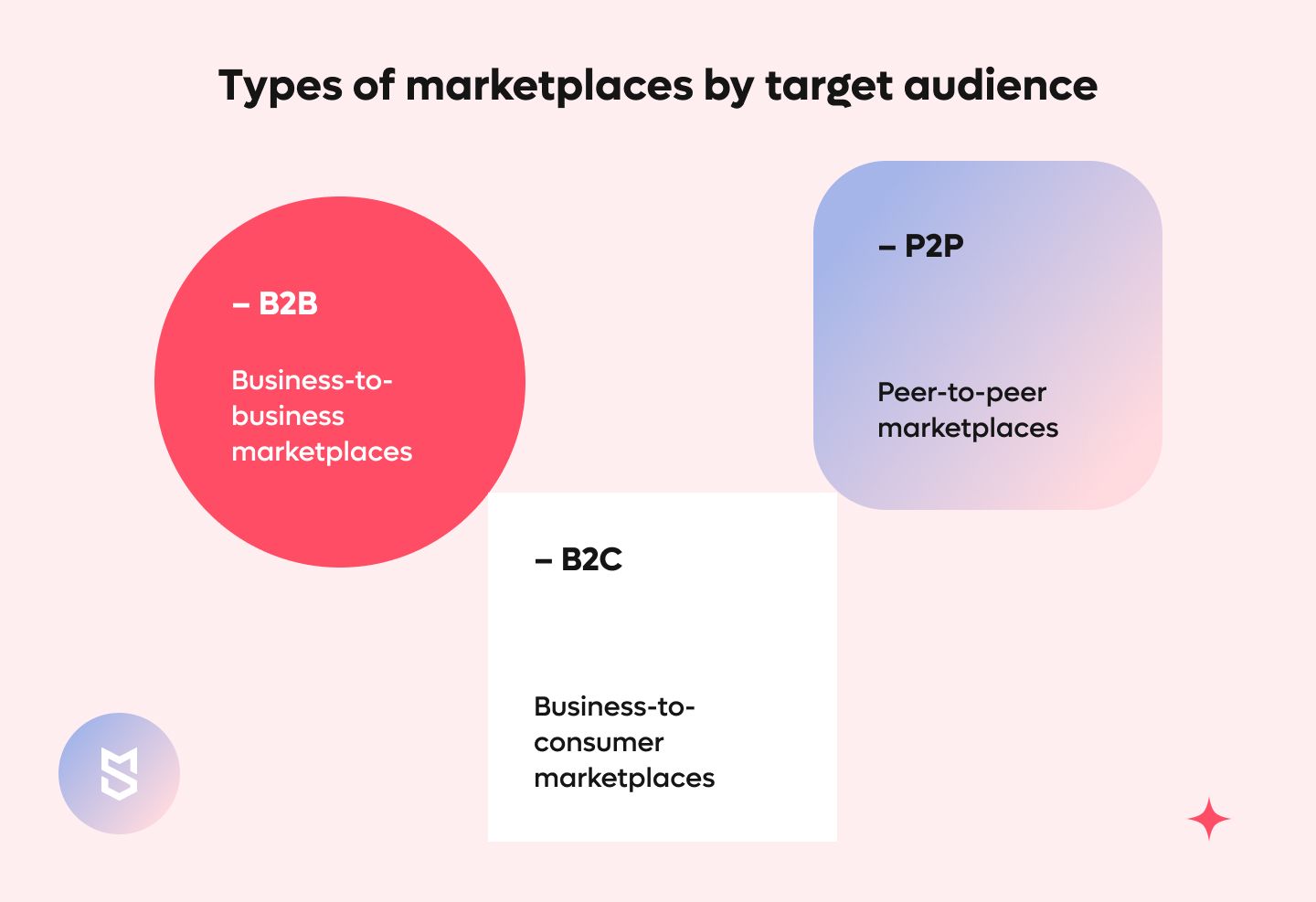
- Business-to-business marketplaces
Such marketplaces serve as a link between two businesses, usually between retailers or manufacturers and wholesale suppliers. A marketplace, in this case, not only facilitates the sale but also provides transparency to the financial deal and helps businesses reach new customers. Among famous examples of B2B marketplaces are Amazon Business and eWorldTrade. - Business-to-consumer marketplaces
B2C marketplaces connect businesses with individual customers. Basically, they are like online retail stores. Amazon, AliExpress, Booking.com — there are countless examples of such marketplaces since this type is one of the most popular ones. This also means that the competition with B2C marketplaces is high, therefore, it can be a sensible idea to build a niche marketplace in order to be competitive. - Peer-to-peer marketplaces
This type is also known as a consumer-to-consumer platform. In this case, the marketplace user can be a service provider and a consumer at the same time. P2P marketplaces connect individuals who want to sell or purchase products and services via one single platform. Uber, Etsy, and OLX are the most known examples of P2P marketplace apps.
2. Types of marketplaces by focus
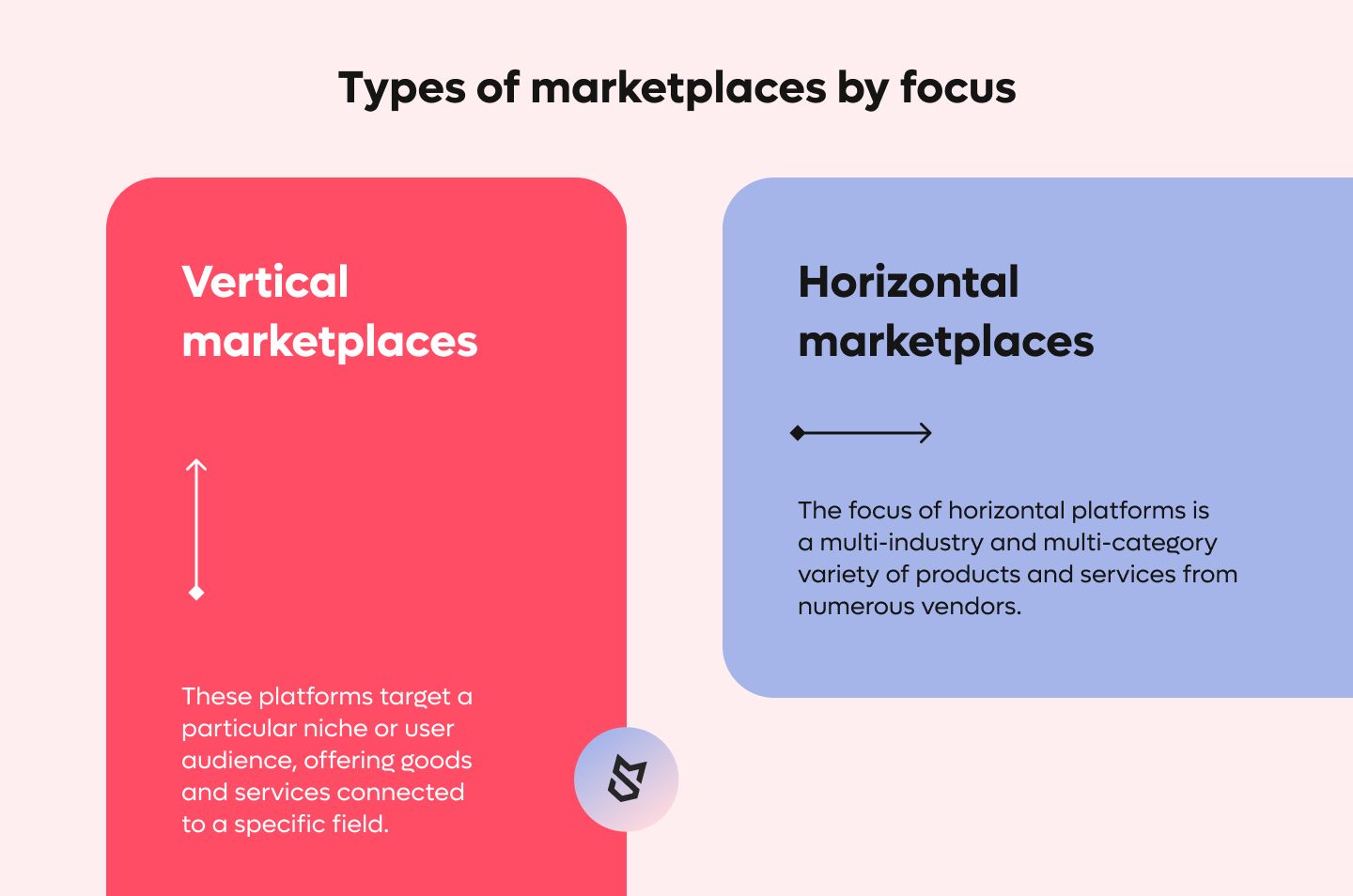
- Vertical marketplaces
These platforms target a particular niche or user audience, offering goods and services connected to a specific field. For instance, Etsy’s focus is handmade and vintage products. Another example you might not have heard of is Petit Vour, a marketplace focused on selling vegan, ethically made beauty products. This makes the platform stand out from other beauty-related marketplaces. - Horizontal marketplaces
The focus of horizontal platforms is a multi-industry and multi-category variety of products and services from numerous vendors. These include globally known giants like Amazon and AliExpress.
3. Types of marketplaces by management approach
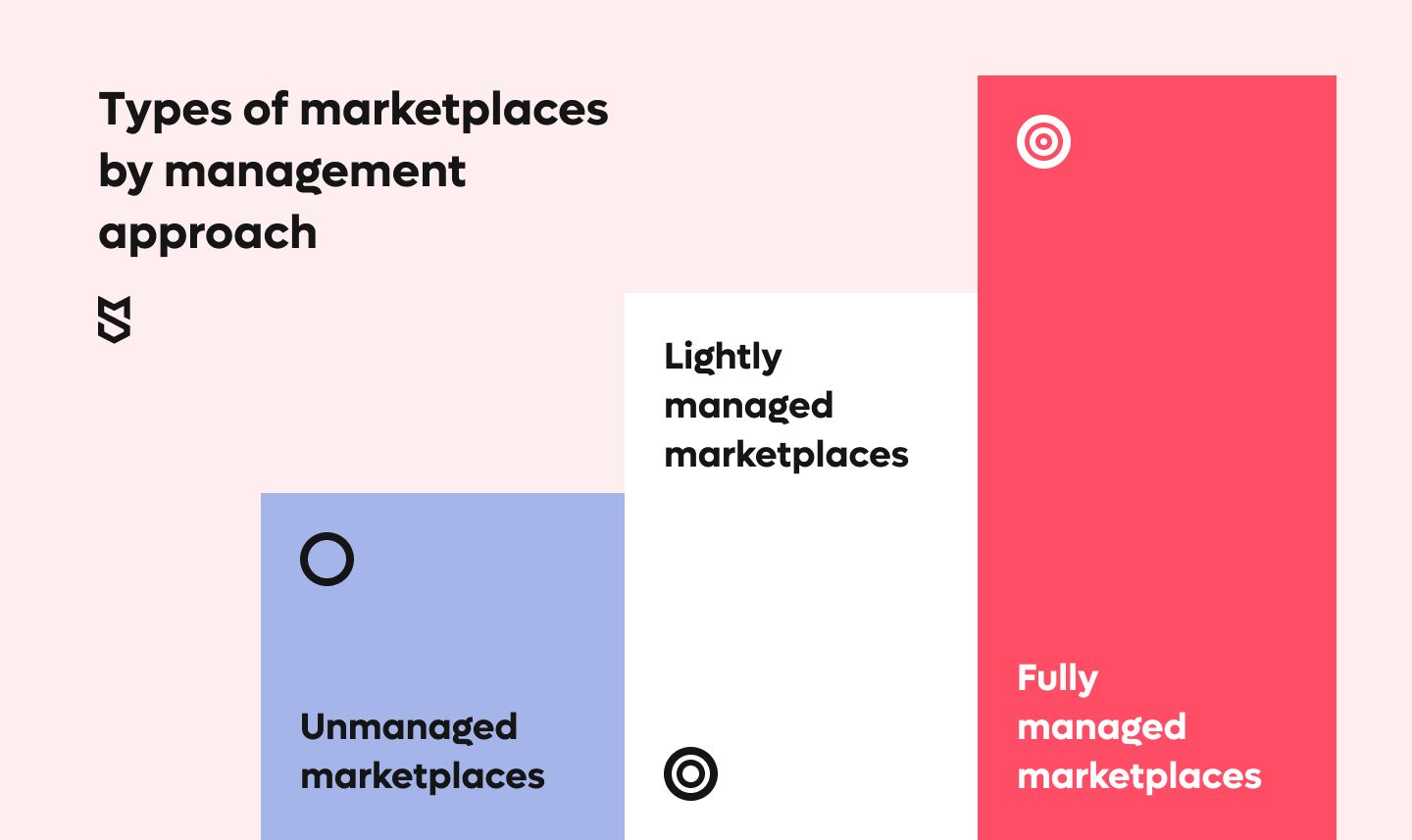
- Unmanaged marketplaces
Owners of unmanaged marketplaces don’t take on the responsibility of controlling the quality of products or services delivered by the vendors. All such platforms can do to protect their customers from unfortunate purchases is implement a review and rating system. - Lightly managed marketplaces
In case of such platforms, the owners check the quality of the goods, and verify vendors’ identities. This means the actual retail sailers or manufacturers have to provide return policies, money-back guarantees, etc. - Fully managed marketplaces
Here, the owners control the whole sales process. They verify the vendor’s qualifications, necessary permits, quality of goods, and so on. Since such platforms are most trusted and usually provide excellent customer service, they naturally charge the highest fees for using their marketplaces.
Benefits of a marketplace
A marketplace is a pot of gold when done properly. This is obvious when you look at big players like Amazon, Etsy, or Craigslist.
For consumers, a marketplace platform is a convenient way of finding the best variety of products and services in real time. A customer doesn’t have to wander around physical stores located all over the city to find the best price — they can just pick a vendor and check reviews. It’s a piece of cake.
For an owner, an online marketplace is an innovative and relatively inexpensive instrument for setting up a business that offers the possibility to start earning money from the very first transaction.
A more detailed list of benefits of running an online marketplace includes the following:
- A scalable business model
The cost to build a marketplace app and an eCommerce app is more or less the same. However, investing in a marketplace is less risky than launching an eCommerce business, since with a marketplace you don’t actually invest in any goods or services, but simply act as a mediator between the seller and the customer. At the same time, marketplaces tend to expand faster than eCommerce businesses do. - Multiple ways to generate income
Though the most common monetization model for online marketplaces is commissions from sales, the apps’ owners can combine it with other models, like premium listings or lead generation fees, ads, and subscriptions. For instance, a part of Craigslist’s revenue comes from premium listings. - Value proposition for the sellers
Online marketplaces are a great way for businesses, especially emerging ones, to sell their products without actually investing in opening a physical store or spending too much money on marketing. In addition, the sellers don’t have to deal with managing the app or website. And even if the marketplace is new on the market, it can attract vendors with lower commission fees and a first-rate user experience of their platform. - Customers' interest
Users are more likely to order from an app that offers a broad range of products or services, where they can choose the best option and order everything they need at once. - Advanced analytics
When properly designed, marketplace apps give their owners the opportunity to analyze the market better by tracking the popularity of vendors and the products or services they sell. This way, the owners know which vendors are worth cooperating with, and which products and services are worth promoting.
To strengthen our point, we’ve found the data on growth in eCommerce sales:
Retail eCommerce sales worldwide from 2014 to 2021 (in billions of US dollars)
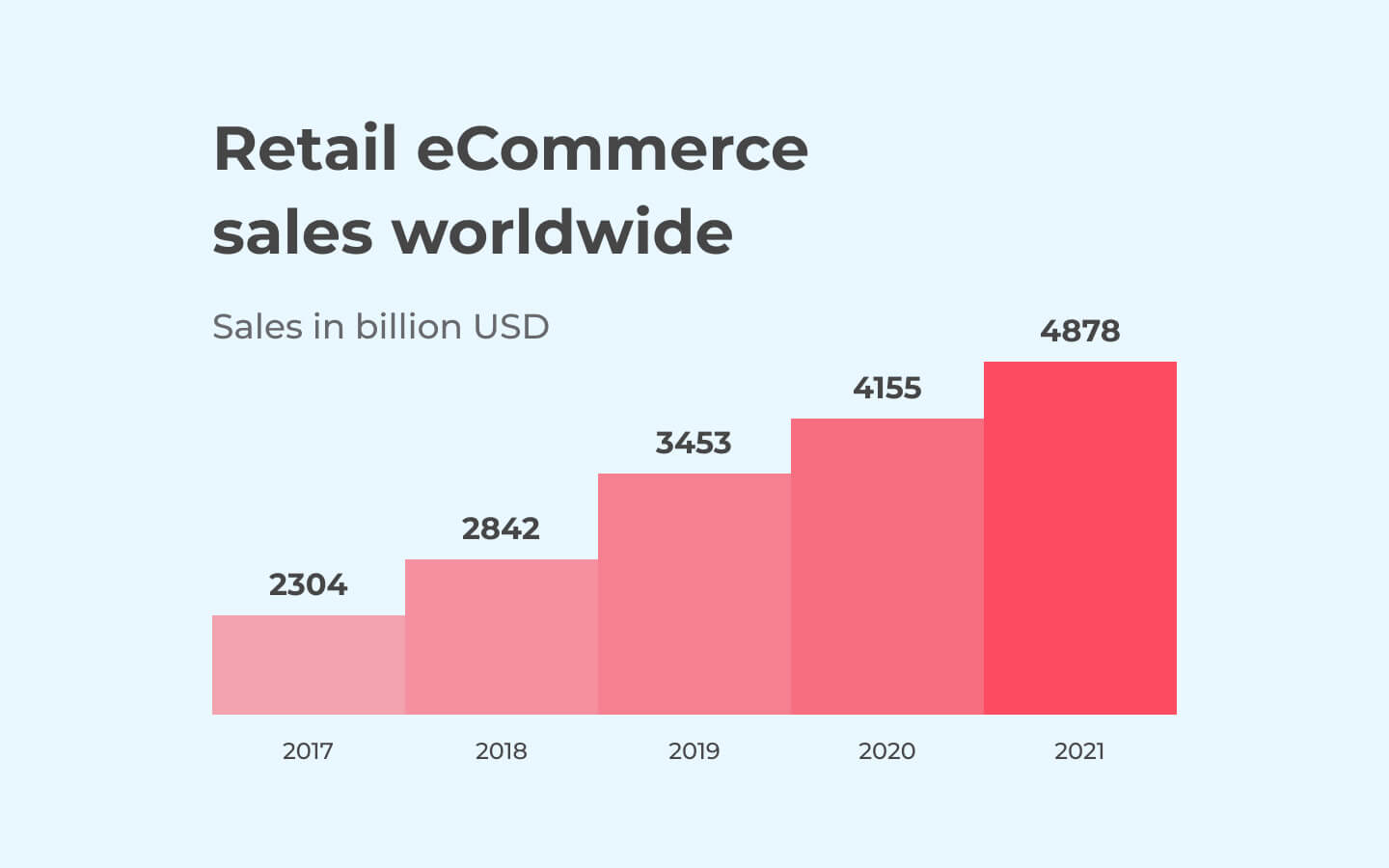
Here are a few more facts on the eCommerce market:
- Global e-commerce sales are expected to reach $5.5 trillion in 2022
- In 2021, there were 2.14 billion unique online shoppers around the world
- 72.9 percent of all eCommerce sales happen through mobile devices
- According to 2021 IPC survey, 74% of people thought that more of their domestic purchases would be done online in the future
- The 2021 online marketplace report by Digital Commerce shows that sales on the top 100 platforms accounted for 62.7% of online purchases in 2020
Downsides of eCommerce marketplaces
In the majority of cases, the shortcomings of running an online marketplace depend on the particular type of application or platform. The most common cons of launching an online marketplace include:
- An extremely competitive market with hard-to-beat monopolistic giants. This means you have much more chances to succeed by building a custom application, which can be costly.
- Complicated third-party payment processing, in addition to no control over the transactions process.
- Hard-to-built customer loyalty, which is especially true of unmanaged or lightly managed marketplaces. In such cases, marketplace owners do not vouch for the vendor’s credibility or the products’ quality. However, the poor quality of the product or service purchased via the marketplace can directly affect its reputation, even if the platform itself had nothing to do with it.
- Possible legal liabilities and responsibilities of suppliers and the platform itself. One of the examples of such complications is the case of a man being killed when he was struck by a tree branch while trying out a rope swing at an Airbnb property. It’s hard to say who is to blame in this case because Airbnb is just a platform, and it doesn’t control its hosts.
Nonetheless, we at Mind Studios believe that most of these obstacles can be eliminated or even avoided. We do this by doing proper research of the market, perfecting the project’s concept, creating unique UI/UX solutions, choosing secure payment methods, and supporting our customers when it comes to launching and marketing the product.
7 Steps for creating a marketplace app
Assume you're inspired by the success stories of the market's main players and are committed to developing an online marketplace application that would not just copy but outperform their success. As professionals in the marketplace apps and services field, we will walk you through each step of the process to get you there:
- Step 1: Evaluate the idea and work out the kinks in the concept
- Step 2: Define your target audience and analyze the market
- Step 3: Define your product. Define your strategy
- Step 4: Define the business model of your application
- Step 5: Create a list of features for your marketplace application
- Step 6: Find the right tech approach to develop your marketplace app
- Step 7. Choose your marketplace app tech stack
Step 1. Evaluate the idea and work out the kinks in the concept

Having an idea is great but an idea isn’t enough to go far. Therefore, we suggest thinking out the concept of the product you wish to develop.
The first thing to do here is identifying the problem your app is going to solve and establishing clear goals of the project. To do this, you will have to work out various hypotheses that include:
- Finding the niche on the market you are going to fill
- Defining the possible target users, as well as the needs and pain points they might have
- Considering the selling points your future app may offer, like unique UX features, the visuals, etc.
- Making a rough estimate of the project’s budget
Remember that at this point, these are just theories which will need to be tested during the next stages.
Step 2. Define your target audience and analyze the market
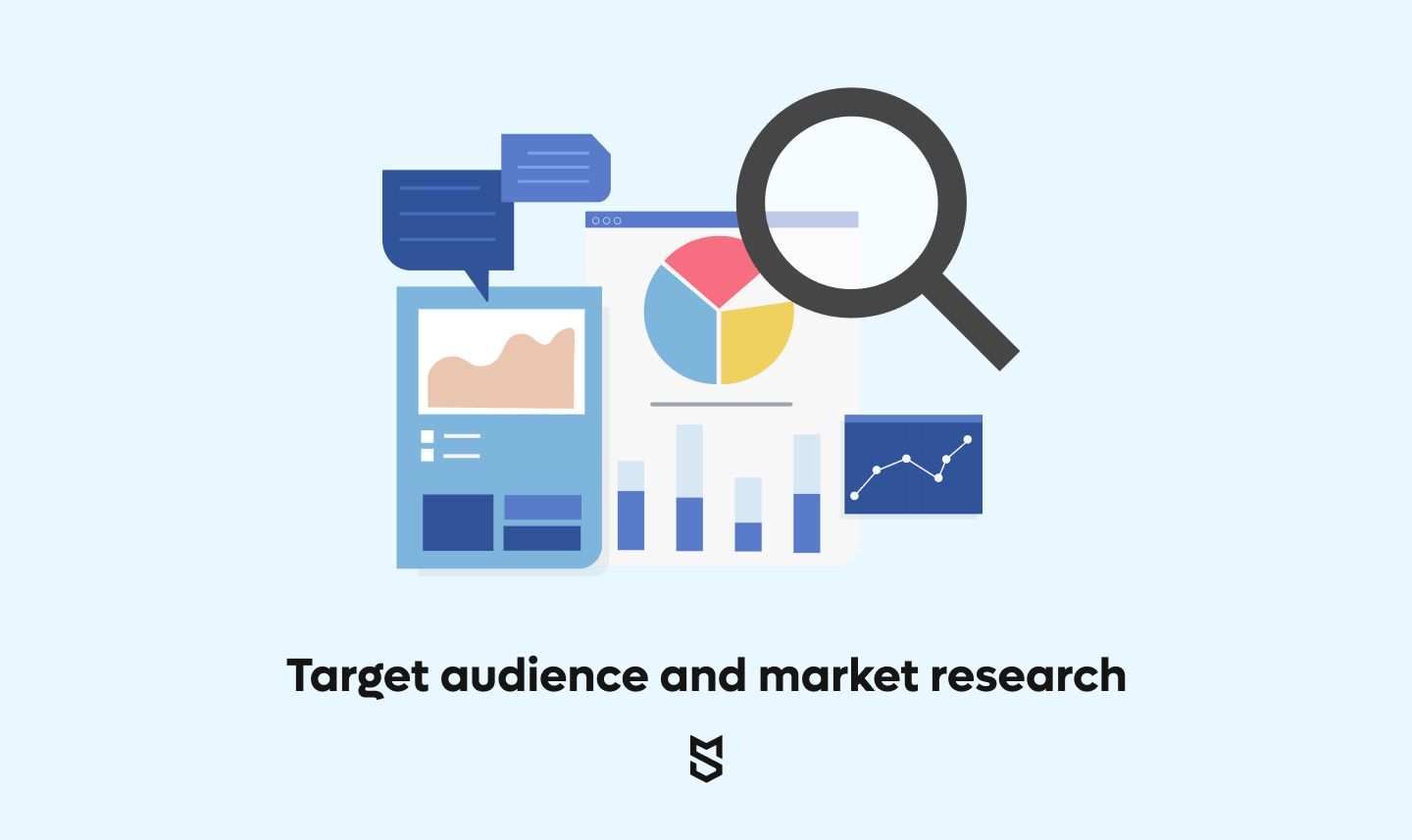
Target audience and market research is an essential part of shaping the concept for your project. This will help you determine whether there is white space for your idea on the market, and help you understand how to make a marketplace app fit in. Here are four steps you need to take to complete this stage.
-
Estimate your target market size
This means figuring out how many prospective users who need your app are out there. This step is crucial, since it will show you if the project is actually worth investing in at all.One of the tools to help you measure the target market size is Google keyword planner. All you have to do is make a list of keywords connected to your marketplace idea, add them to the planner and track the average monthly searches of these keywords. The more users search for them, the more chances there are that your idea is viable.
-
Identify your target users and investigate their needs
At this point, it’s time to test your hypothesis regarding the target users and their pain points. You can find out who they are and what they require by reading other apps’ reviews, community threads, Quora posts, etc.An even more effective way to do that is reaching out to a few prospective customers or creating a focus group to communicate with the target audience about their needs. Chances are, this will help you single out one or two biggest requests that the current market is not fulfilling.
-
Make a list of apps similar to the one you want to build
You don’t have to make a deep analysis of each of the competitors yet. Just browse through the app stores and check out what your competitors have to offer. In addition, you can use an app intelligence platform to search for competitors with the help of keywords and feature tags. -
Conduct an in-depth analysis of your competitors
This includes analyzing the features of the apps, their performance, UI/UX design, monetization model, positive and negative reviews, etc.
When examining the competitors closely, we suggest starting the research by studying big players in the domain. For example, let’s consider globally known marketplaces like Amazon, Etsy, and Allegro.
Amazon
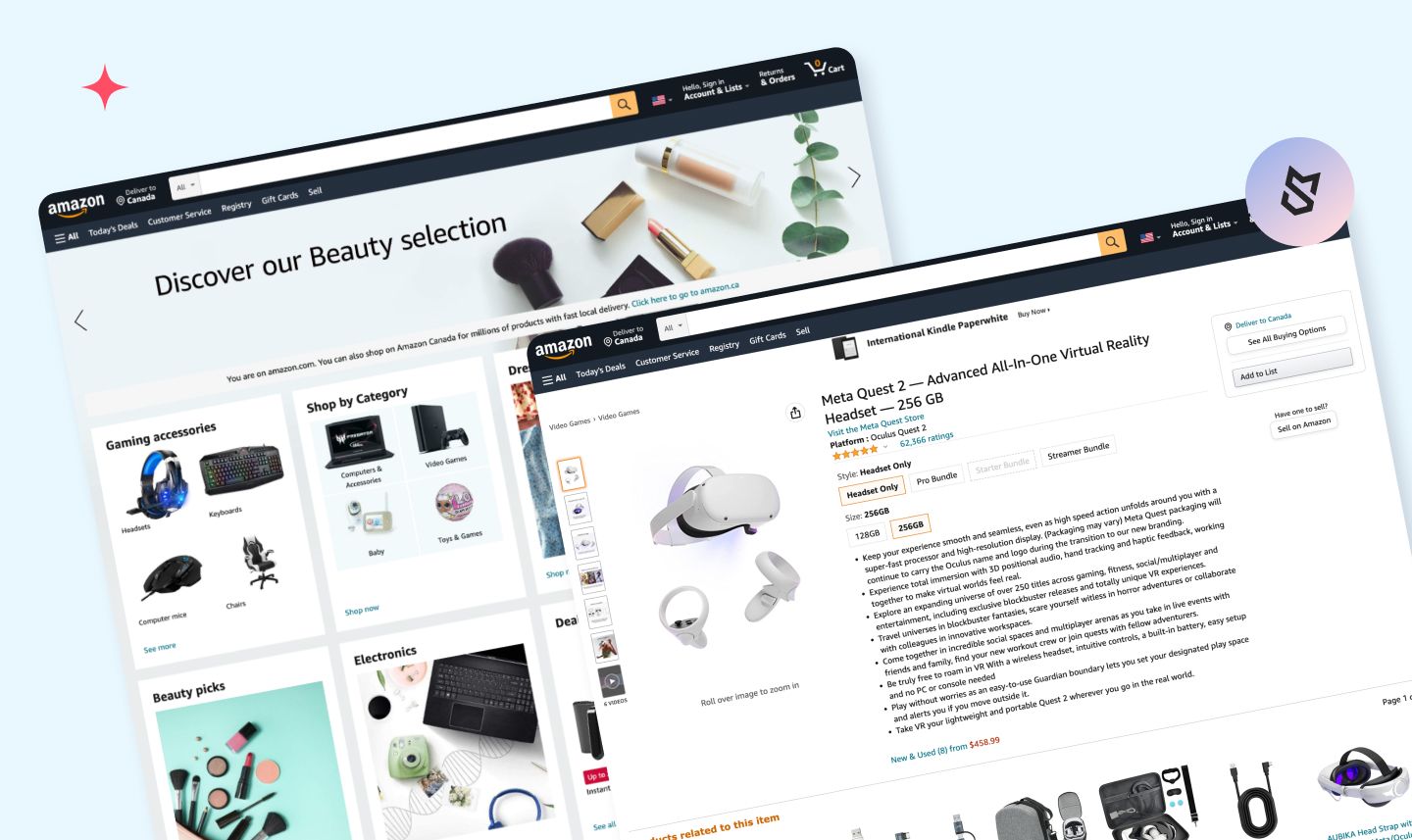
Today you can hardly find a single article, note, or book about online marketplaces that don’t mention Amazon. No wonder. Amazon is the largest online multi-vendor eCommerce marketplace in the USA. There isn’t a single thing that can’t be bought on Amazon, starting with clothes and finishing with the artwork.
Amazon was founded in 1995 in the garage of Jeff Bezos’ rented house and began as an online bookstore. Nowadays, it’s the largest internet retailer in the world as measured by revenue and market capitalization.
How does Amazon work?
The principle of this giant marketplace is quite simple: third-party vendors (suppliers) add products, which are then included in Amazon’s inventory. Once a customer makes a purchase, the supplier is liable for fulfilling the order.
How does Amazon make money?
We’ll consider only marketplace value generation, or how the marketplace platform generates income. If we took into account all sources of income for Amazon while writing this article, the section dedicated to Jeff Bezos’ business would turn into a door stopper.
On average, sellers pay Amazon ~15% of the sale price of every item sold. Amazon offers different terms and plans for individual sellers and pro sellers. The latter ones can purchase a monthly subscription, and the individual sellers have to pay a per-item fee when an item sells.
Highlights
- The widest possible range of products to select from
- Easy-to-use and convenient design with smart tools and instruments
- Trustworthy system of reviews and feedback
- Personalized recommendations and best buy offers based on user’s shopping and browsing history
- Favorable loyalty programs
Etsy
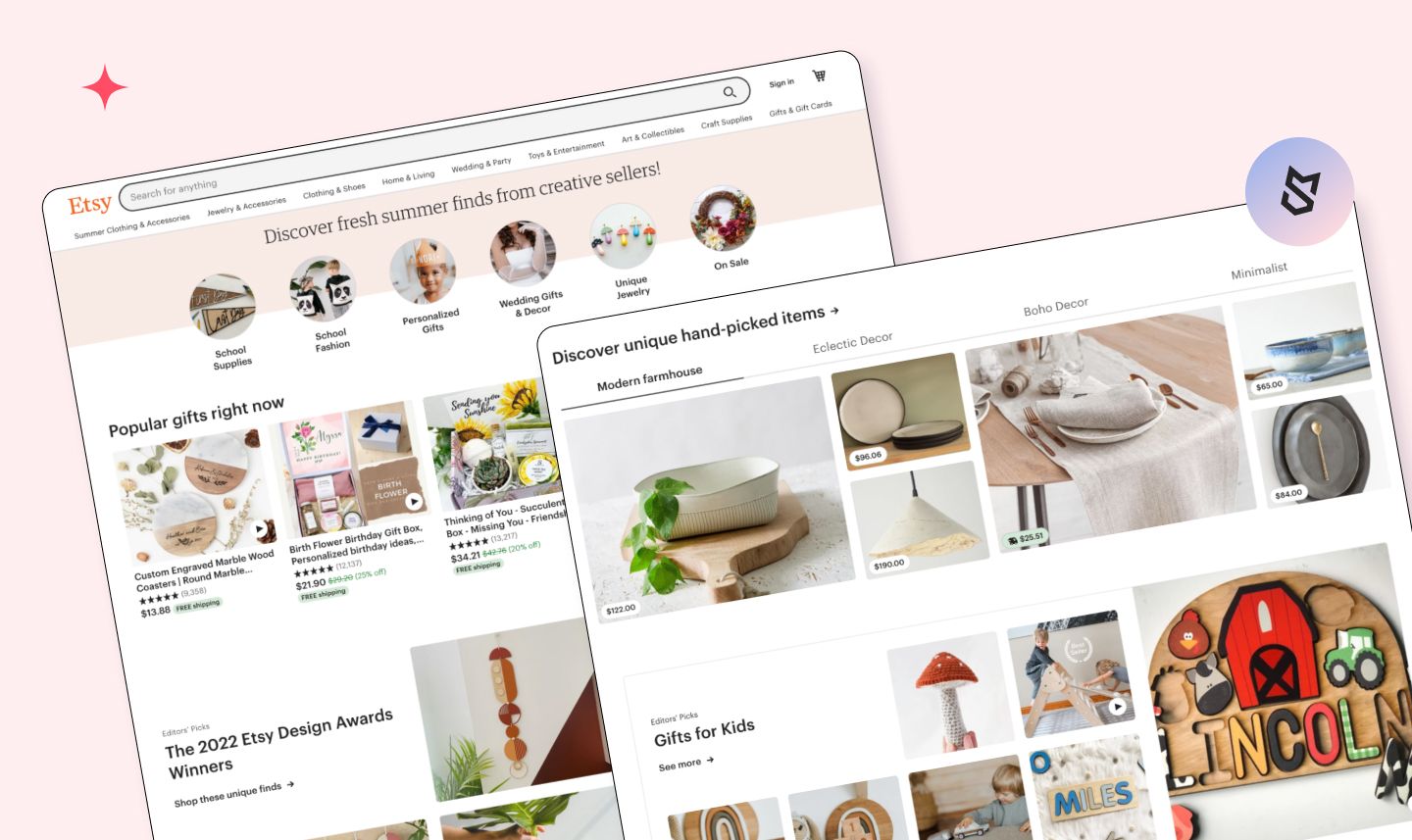
Founded in 2005, Etsy is one of the most popular eCommerce websites. What distinguishes Etsy from Amazon is that it’s narrowly specialized. Etsy is focused on handmade goods, vintage items, and artwork.
How does Etsy work?
Product suppliers create accounts where they add their goods to be sold.
Once a customer decides to make a purchase, the vendor is liable for fulfilling the order. Accounts are free and there’s no cost for using the platform.
How does Etsy make money?
Just like Amazon and eBay, Etsy takes a listing fee ($0.20 for every listed item) and charges a transaction fee (6.5% of the sale price).
Highlights
- Specializes in handmade products, products in short supply, and vintage and unique goods
- Valuable promo and marketing instruments for vendors (Facebook integration, Google Analytics, etc.)
- Customized and personalized recommendations based on a buyer’s shopping and browsing history
- Convenient and user-friendly interface, navigation system, and backup tools
Allegro
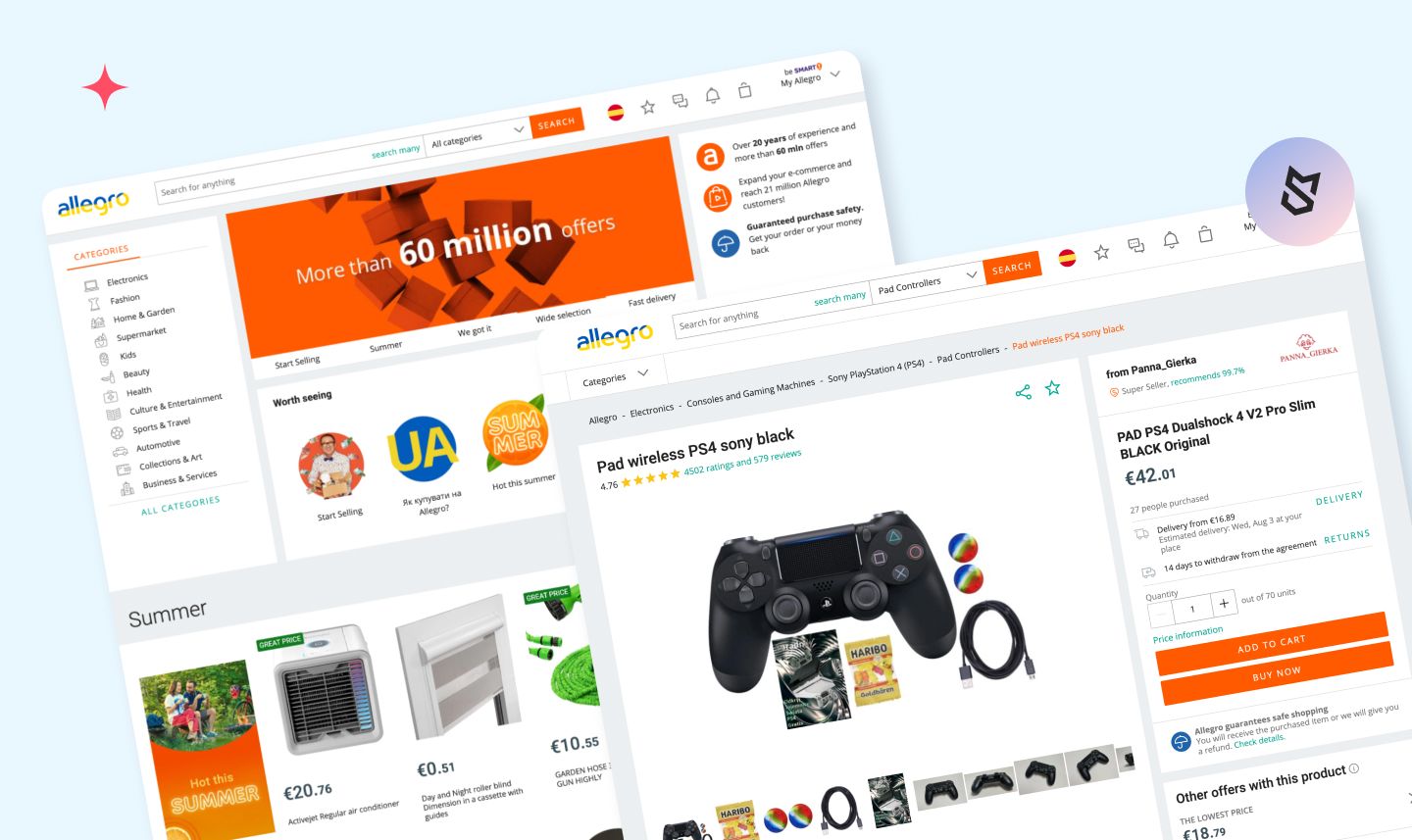
Founded in 1999 in Poznań, Poland, Allegro now is the most popular online marketplace in the country and one of the top ones in Europe. The platform has over 21 million accounts created and sells 1.2 million items a day.
How does Allegro work?
Allegro is mainly a B2C marketplace that has both a web and an application version. Its most popular categories include electronics, fashion, home, childcare, and health. Though sellers can list used items, around 90% of products sold on Allegro are new items that come with a warranty and insurance.
To start selling there, users need to create a business account and get it verified. Then, they can undergo an onboarding process. However, foreign retailers also need to provide EEA company papers in both English and Polish.
How does Allegro make money?
Allegro makes money by charging a commission fee on sales. Depending on the product’s category, it varies from 5 to 15%. However, new retailers on the platform can apply for a discount for the first six months of cooperating with the platform. In addition, Allegro offers businesses to boost sales through their sponsored ad campaigns and a subscription.
Highlights
- Accessible to merchants of all sizes
- Discounts on commission for new business accounts
- Free training with platform experts on how to sell with Allegro
- Allegro Smart loyalty program available to subscribers
Depending on the type of marketplace you are creating, the competitors might differ. If you choose a narrower niche, the list might not include such globally known giants, hence the competition will not be this tight. In any case, analyzing the market will help you shape your own idea and come up with a unique value proposition.
Step 3. Define your product. Define your strategy
After you’ve analyzed the market and the target audience, you need to compare the results of the research with the hypotheses you’ve made during the idea evaluation stage. If there is any discordance, you might need to refine your idea accordingly. Once you do that, it’s time to focus on what you can do to actually be competitive.
At this point, you need to specify the benefits your app will deliver to customers. There are four main benefits you can offer:
- Best quality, meaning the service of the platform should be impeccable, anticipating any feature the prospective sellers and buyers might need. Newegg, a marketplace for selling electronic products, is a good case in point due to its in-built marketing tools that help sellers improve their products’ reach.
- Best value. This does not necessarily mean the service with the lowest price, but rather the one that provides the best quality-to-price ratio. For example, even though Etsy has raised its commission fee to 6.5%, it also preserves the sellers’ identities, which can be extremely important to creators and small businesses.
- Must-have, which means the platform provides a service that will always be in demand. For instance, people are always going to have the need to get rid of some used stuff, therefore, eBay will probably always remain a demanded platform.
- Luxury and aspiration. Such services provide its consumers with the experience of a wealthy lifestyle. One of the examples is Farfetch, an online luxury fashion platform selling high-end products from over 700 brands.
Proceeding from this, you should answer the following questions:
- What products or services is your app targeted at?
- Who is your target audience?
- What makes your product unique?
It might seem that it’s very hard to make a difference in the mobile commerce market since the major features are the same in your app and your rivals’ applications.
This is somewhat true, but you can always introduce interesting and attractive features like:
- Discounts
- Loyalty programs
- Free shipping
- Guaranteed refunds
- Personal offers
- Gift cards
Step 4. Define the business model of your application
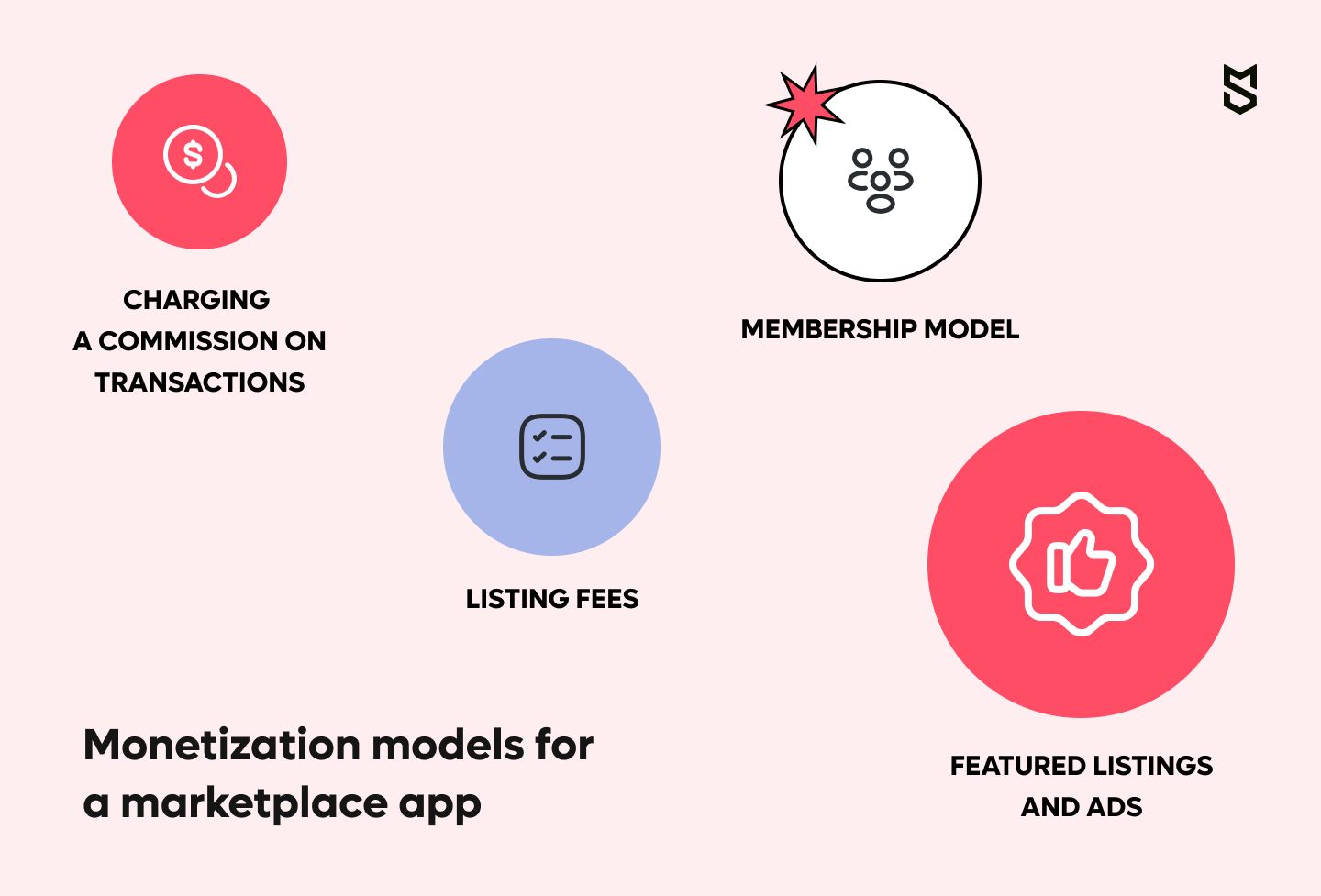
It might seem that making money with the app is way down the road, but the monetization model is something you have to pick before getting down to the development process. This way, you will save money on post-design adjustments, since the business model influences UI/UX solutions the designers come up with.
There are four main ways to monetize the marketplace app:
- Charging a commission on transactions is the most popular business model among modern marketplace platforms. When a customer pays a seller, the marketplace charges either a flat fee or a percentage of the transaction. This model is very attractive for sellers as they aren’t charged before they get value. Spectacular examples of companies that use the commission business model are Airbnb, Etsy, and Uber.
- Membership model. This is the model where marketplace users are charged a fee to access the platform. In this model, the marketplace offers value by helping sellers find new customers and helping customers save money or find unique experiences. One of the examples of a membership model is Amazon, with its $39.99/month subscription fee for professional sellers (users selling 40+ items monthly).
- Listing fees. Some marketplace platforms charge a fee to sellers when they add new products. This model is generally used when sellers get value based on the number of listings they have on the platform and the value per listing is large. This model is simple: it aggregates a massive volume of listings, locates them in one place, and guarantees lots of visibility for these listings. The best-known example of the listing fee model is Craigslist.
- Featured listings and ads. Recall the marketplace application Letgo and its Bump feature. Essentially, this model offers free listings, but sellers can pay to have their goods featured above others.
Modern marketplaces implement various business models to generate revenue. Many of them use several models at the same time. For instance, Etsy uses a commission model and also charges a fee to post new listings.
Trying out multiple models to find the best option for your product is the best approach. Eventually, when your application grows, it makes sense to combine several models and build your own distinctive model which takes into account everything that’s happening in your application.
Step 5. Create a list of features for your marketplace application
Start with establishing priorities and performance indicators. By defining the top performance indicators, you can outline the design and major features of your application. There are three key pillars to focus on when defining your top indicators: UX, usability, and branding.
- UX. The user experience is about helping your users identify the features and functions they’re looking for without hassle. This means that even such a minor detail as text alignment or color selection can play a big role. Correct image placement, color selection, etc. draws attention, guides users through the application, and helps them focus on searching and buying.
- Usability refers directly to the user interface. The features of your marketplace application should be easy to understand.
- Branding is an aspect that’s frequently brushed off. Every business has its face — an identifiable brand name and logo. Your product, a marketplace application, must resonate with your brand.
Here, we’ve gathered the basic features any marketplace application should have, divided into two lists: one for the seller’s app and one for the buyer’s.
Basic features for the seller's app
- Sign in/sign up
- Listings management page where sellers can upload photos and videos, set up the price, add and edit the description, etc.
- Dashboard for the sellers to review all the key data, like the number of orders, reviews, etc.
- Orders, which include both open and finished orders
- Chat to communicate with the customers
Basic features for the buyer’s app
- Sign in/sign up via email or social media
- Menu bar
- Search, sorting and filtering
- Product and/or service screen, which includes an image, and a description with the price of what the customer is looking for
- Chat where the customer can communicate with the seller
- Shopping cart and checkout
- Order history
In addition to the basics, we recommend adding the following features to your future marketplace app.
- Secure payment gateway. With the rise of cybercrime and the vulnerability of personal data, customers are concerned about the safety of their financial data. A marketplace application should provide a payment gateway interface that securely connects customers to a payment system. Experience has shown that the best payment processing frameworks today are Stripe, PayPal, and Payoneer.
- Product comparison is the next essential feature. The Google Consumer Barometer shows that 55% of digital moms and Millennials research products online before making a purchasing decision. Introducing an innovative approach to viewing and comparing products in the application will let your users research products or services without leaving the app.
- Customer reviews. The majority of shoppers count product reviews as extremely important. Customers always want to know the opinions and verdicts of others before making a choice. Understandably, if reviews are positive, customers are likely to purchase a product. Therefore, consider creating a feature that displays product reviews if you wish to convert users into buyers.
- Product images. An image is all that the customer sees before making a purchase. We suggest implementing support for high-resolution images. We also suggest investing in real photos instead of stock images. This will help users to see the product in a real environment and take a closer look at the details.
- Discounts. Customers love discounts, cashbacks, and other attractive offers. The secret of discounts lies in the possibility to save some money while making a good buy. Abandoned carts are one of the biggest problems for eCommerce businesses. Many customers hesitate over purchasing a product that’s in the cart and leave the app even if they’re fine with the price and quality. There is a solution, though — a special discount on a product that’s left in the cart. A dedicated discount is a feature you could add to your eCommerce application to spur customers to complete checkout. Even the most hesitant customer is more likely to buy a product if they’re offered a discount on it.
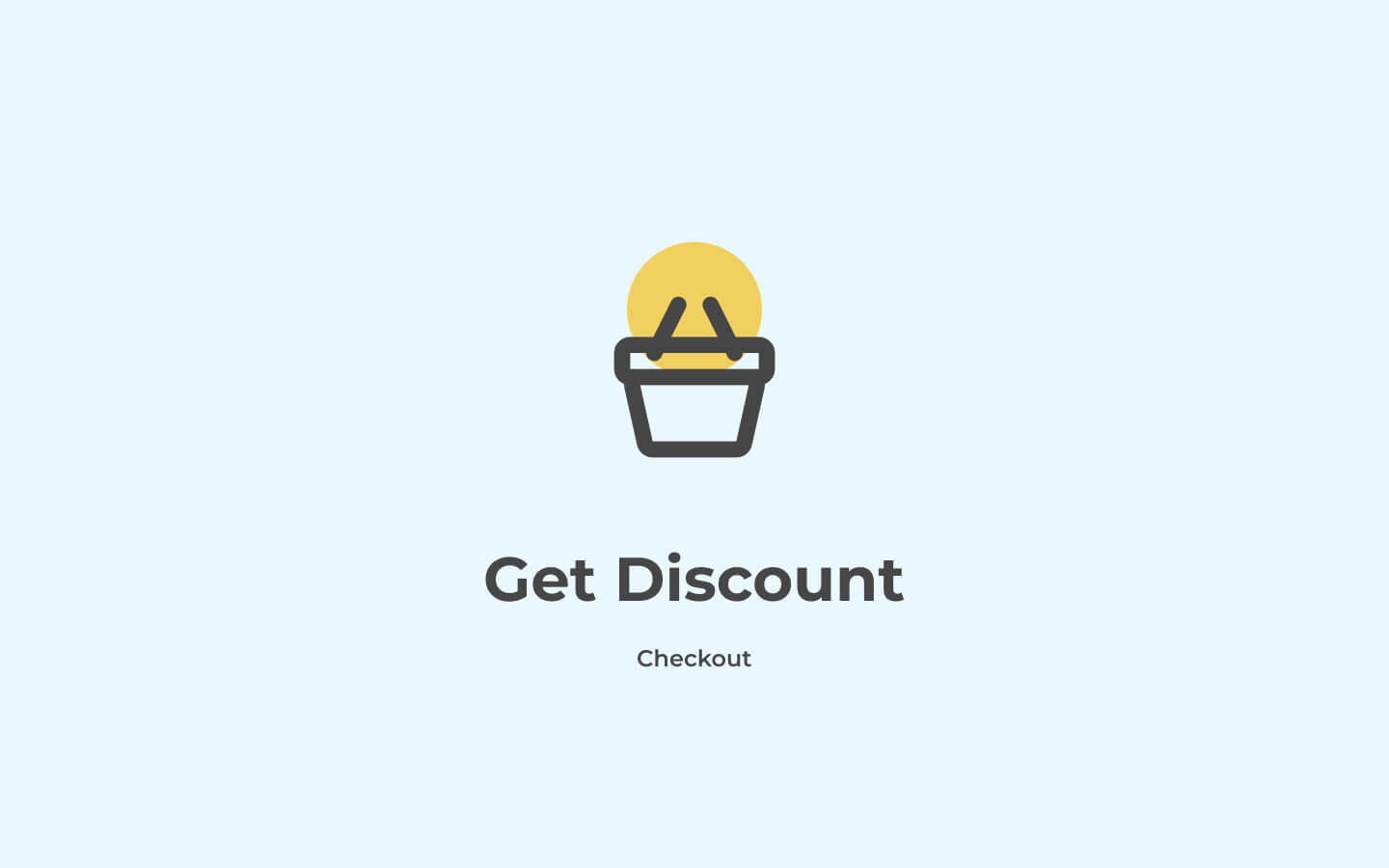
Step 6. Find the right tech approach to develop your marketplace app
Basically, there are just two major groups of the tech approach you can choose from, i.e., non-custom app development and custom app development. Let’s take a look at the pros and cons of both.
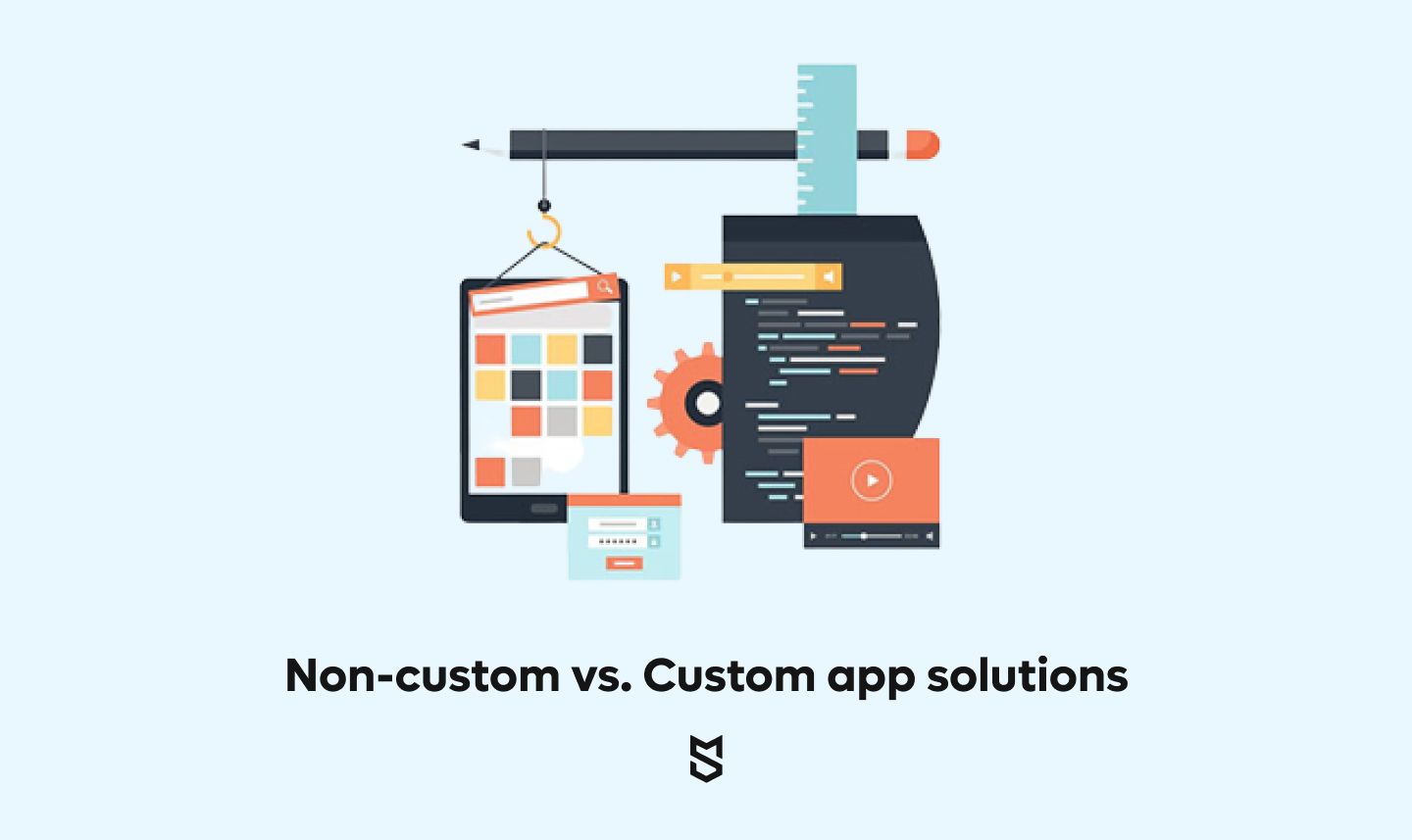
Non-custom app
This approach is usually best suited for startups or projects on a tight budget. In this case, the owners can either choose a ready-made solution or SaaS (Software as a Service, a distribution model where a cloud provider hosts an app and makes it available to end users over the internet).
- Ready-made solutions are tied to app builders, such as OpenCart or Magneto. This is a fast solution that doesn’t require much technical expertise. However, the major drawback is that they aren’t designed for marketplace shopping app development,, but simply offer extensions that will get you a basic non-customizable application.
- SaaS solution is definitely a better option compared to app builders. Simply put, Software as a Service allows creating a marketplace with little or no development experience. This way, the marketplace owner gets an app delivered over the Internet as a service, without having to install and maintain software. The most prominent examples of such solutions are Sharetribe, Marketplacer, and Arcadier. Keep in mind that SaaS also has some drawbacks, the biggest of which is that this option also doesn’t leave much space for customization of UX and out-of-the-box solutions.
It is a sensible option to pick these solutions if you need to launch really quickly, and the features available with these options cover your initial needs. However, once you get the proper funding, it’s still advisable to start working on a custom-built app if you want the platform to win over as many customers as possible.
Custom marketplace app development
If the idea for the marketplace is based on a unique concept and striving to become a significant player on the market, a custom app made from scratch is the best option. This solution will get you an app that perfectly fits your target audience’s needs and provides a superior user experience. So, once you have the funding for it, you and your development team can go two ways in terms of building it:
- With the Native approach, the team develops two separate marketplace applications for iOS and Android, using the operating systems’ officially supported languages: for instance, Kotlin for Android and Swift for iOS.
- With the React Native framework, the developers build one marketplace app by writing code in JavaScript that makes up to 80% of Android and iOS apps. Then, the developers can make minor adjustments to complete the app for both operating systems. Such codebase is easy to reuse later if you want to launch a web version of the marketplace.
Step 7. Choose your marketplace app tech stack
As soon as you decide on the tech approach and the list of features your app is going to have, the development team can pick the tech solutions to actually build your marketplace. The tech stack below includes the solutions the Mind Studios team would pick to build a marketplace app.
| The tech stack for a marketplace app | |
|---|---|
| Mobile platforms | Android, iOS |
| Programming language | Kotlin for Android, SwiftUI for iOS |
| Framework | Ruby on Rails, Phoenix, Nest.js | Database | Firebase, PostgreSQL |
| Cloud environment | Azure, Google, AWS |
| Real-time chat feature | Websockets, Sidekiq, Twillio |
| Database | Firebase, PostgreSQL, MySQL |
| Push notifications | Firebase, APNs, Amazon SNS | Payment Gateways | Apple Pay, Android Pay, PayPal, Braintree, Stripe |
How much does it cost to build an app like Etsy, eBay, or Quikr?
When deciding to build an online marketplace app, you should keep in mind that its cost will include the cost of the technologies, the cost of developing special and custom features you decide to adopt, and marketing costs. These are the parts of the cost that influence your budget the most.
Mind Studios’ approach to building an eCommerce marketplace application
In this section, we’ve based our calculations on our approach to building mobile apps and eCommerce marketplace apps in particular.
Speaking from experience, the team for building an eCommerce marketplace application should include the following experts.
- Project manager — 1
- Backend developer — 1
- UI/UX designer — 1
- Android developer — 1
- iOS developer — 1
- QA engineer — 1
Note: The team composition and the number of members depend on the scale of the project and the scope of work.
When working with any mobile app, the first crucial stages of the project are:
- Market research and business analysis
- Product definition
- Feature definition (core features and add-ons)
- Business model selection
Now, let’s assume that these stages, which we’ve covered in the previous sections, have already been successfully completed and focus on the flow of your local marketplace app development. We’ve singled out five main stages of this part of the project.
#1 Prototyping
To understand how the end-user will exploit the application, it’s important to create a mind map of interactions between screens and work out the product functionality.
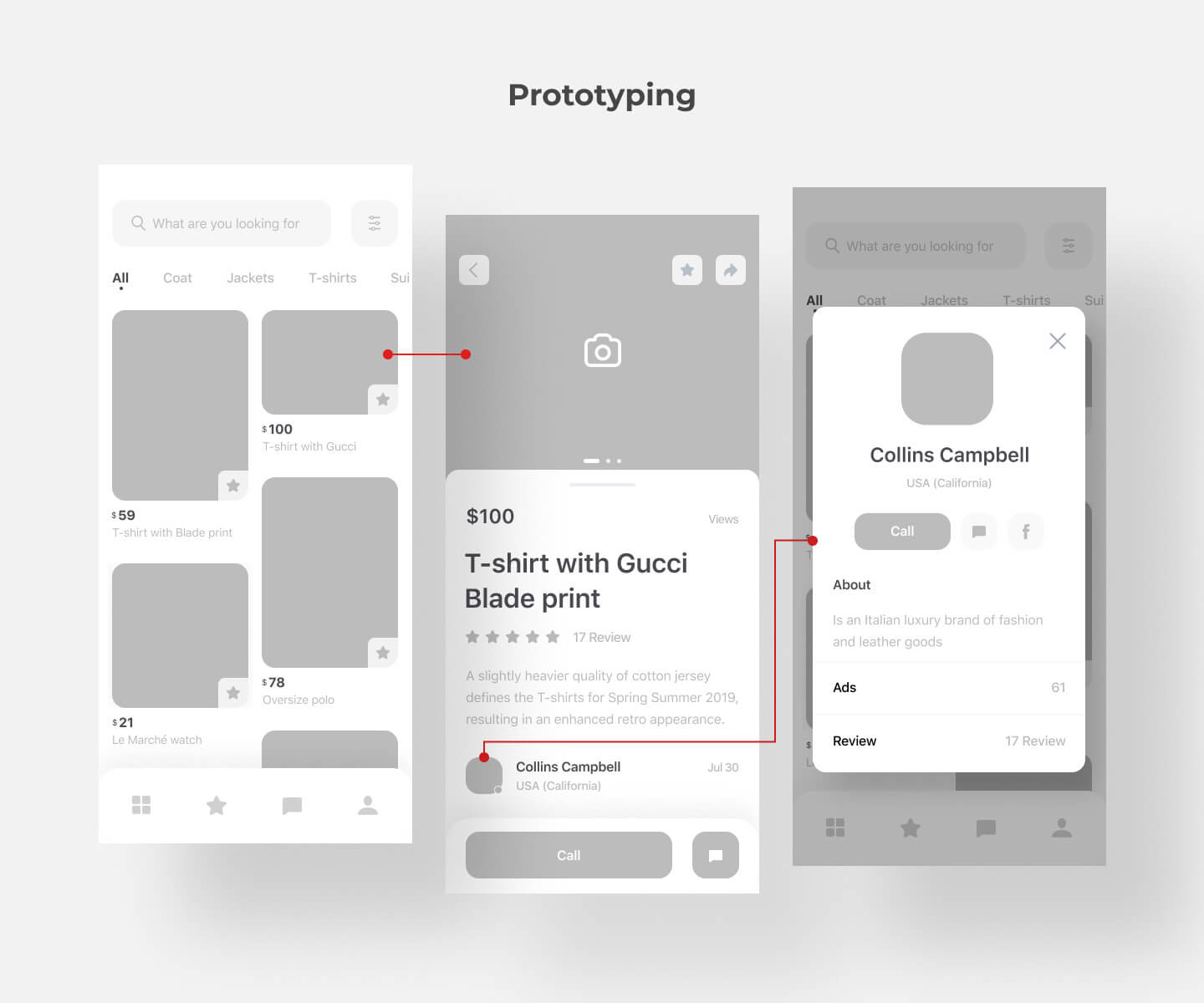
Designing the UI/UX is about developing the application prototype. When designing the UI/UX of an app, developers implement all the functions described in the specification, determine both application and end-user behavior, and think out the location of buttons and the functionality of each screen.
The prototyping stage involves polishing up product functionality and building a map of user behavior.
#2 Creating a design concept and rendering app screens
To create a design concept, it’s enough to render a few (oftentimes up to five) elaborated screens proceeding from the goals, target audience, and functionality. As a rule, designers provide the concept in several styles to choose from. When the design concept is approved, the rest of the screens are rendered in compliance with it.
#3 Development
Complex applications should start development with a minimum viable product, or MVP. An MVP is the first version of the application with just enough core features to satisfy early customers and get feedback for future product development. The major purpose of an MVP is to test the product in a real customer environment and evaluate if it solves the initial problem or meets the initial goal. Feedback will help you to revise the present version of the product, gather information on bugs, and find out customers’ wishes.
#4 Testing
It’s quite hard to foresee how an application will be used in practice while developing it on a computer. All applications are unique, and bugs are unavoidable during the development of the first version of the app. It’s important to compile a list of bugs and improvements in order to polish the basic functionality of the product before introducing new features and add-ons.
#5 Updating
As soon as the first version is revised and debugged, the MVP is ready for new features and add-ons. The update phase involves the iterative implementation of both major and minor new features to the application’s core functionality. After updates are deployed, it’s critical to conduct a second and final round of testing during which the QA engineer will search for bugs and compare the results with the project requirements. Testing is repeated until the criteria for test termination are reached.
Done! Now it’s time to release your flawless marketplace application and show tremendous results on the market.
Based on an hourly rate of $45 which is average for Eastern European companies, if you want a platform similar to Etsy, an online marketplace app development cost starts at $137,000. In the table below, we’ve summarized the numbers of each development stage.
| Stage | Time, hours | Cost, USD |
|---|---|---|
| Market research and business analysis | 80+ | 3600 |
| Project management | 300 - 420 | 13 500 - 18 900 |
| UI/UX design | 160+ | 7200 | iOS development | 780 - 860 | 35 100 - 38 700 |
| Android development | 780 - 860 | 35 100 - 38 700 |
| Backend development + admin panel | 640 - 780 | 28 800 - 35 100 |
| Testing and updating | 320 - 440 | 14 400 - 19 800 |
| Total | 3060 - 3600 | 137 700 - 162 000 |
Note: The actual marketplace app development cost directly depends on the hourly rate of the development company and may vary.
Want to find out how much it costs to build an eCommerce application at Mind Studios? Request a free quote!
How to choose the right marketplace app development company
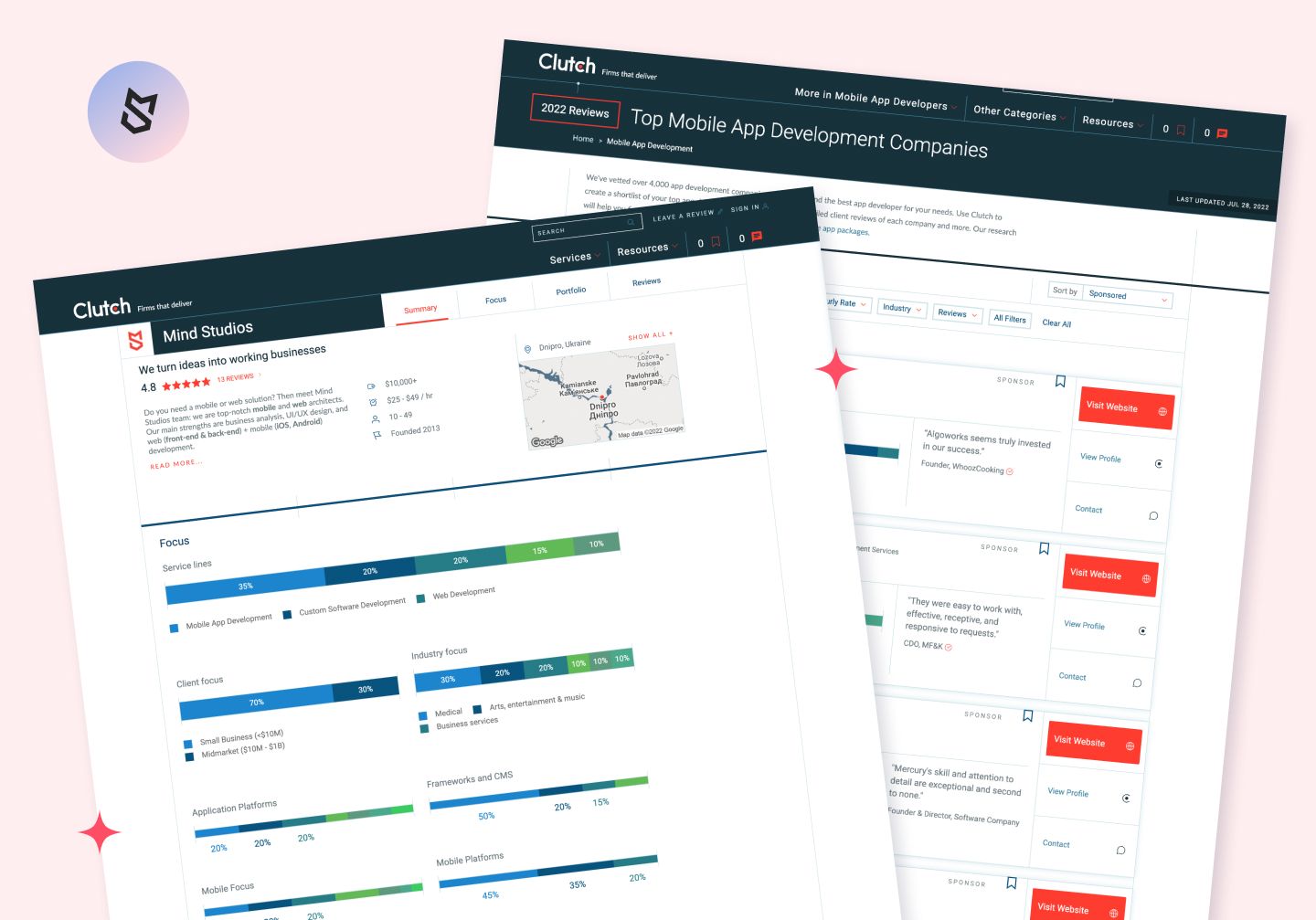
For those looking for a development partner to create a marketplace app like Etsy, the options are numerous. You can find individual freelancers to do the job, hire an in-house team, or work with an outsourcing company. Depending on your budget, you can cooperate with the developers from the US at a $150 hourly rate, or pick an Eastern European team for one-third of that price. Whatever way you choose to go, there are four rules we recommend sticking to.
-
Define the scope of work and the budget for your project
What kind of app do you want to build and what problem is it going to solve for the users? What are your business goals? And how do you plan to achieve them? Once you know the answers to these questions, you will be able to make a roadmap for the project and determine what kind of team you need for it.Simply put, this means that instead of saying “I want a marketplace app that will be a hit” you need to define your needs more clearly. For instance, you can say that you want to create a marketplace that sells premium musical equipment and targets musicians from the US and Canada.
Also, define the budget you can direct into online marketplace app development since it will influence your choice of the development team.
-
Pay attention to your candidates’ expertise
The most popular ways to look for individual developers and development teams are Clutch and GoodFirms. These platforms pay extra attention to checking whether the companies’ and freelancers’ reviews are real or not. They also allow you to set the filter according to the type of work you need, your budget, and other criteria. After you make a short list of the candidates that fit your requirements, make sure to check their tech expertise, skillset, and experience in solving challenging tasks or developing similar apps. After that, you can actually reach out to the candidates and conduct interviews. -
Check the team’s credibility
If you want to be 100% sure you are making the right choice, you can go further than just reading reviews and checking the portfolios of your candidates. Look up the apps the developers created, try them out, and contact a few of their previous clients to ask for their feedback. -
Agree upon every detail of the cooperation officially before getting started
This might include such issues as a money-back guarantee or a trial period, signing a non-disclosure agreement, establishing communication guidelines, etc. After everything is set, make it official by signing a contract.
Find out more on how to find a development team for your project in our article on outsourcing mobile app development.
Extra tip from Mind Studios’ team: When choosing a development partner, make sure your values and approaches to work align. This factor can often be overlooked, but it does contribute to the whole cooperation being smooth and efficient.
For instance, one of our company’s key values is unwavering care about the product we are developing. This typically means that we do not impartially follow the instructions. If we see that the plan is flawed, or there is a better solution for the project, we usually reach out to the client and discuss the options.
So, if you are looking for a passionate team who is going to get involved, don’t hesitate to add Mind Studios to your shortlist of prospective development partners.
Conclusion
The biggest challenge of creating a marketplace application is coming up with a concept that will make your platform stand out and provide the customers with unique experience. The rest you can delegate to a skilled, experienced development company.
Besides, some companies can assist you with perfecting the concept of your product by digging into the market and coming up with the solutions your prospective users have been waiting for. In fact, that is exactly what Mind Studios team does when working on the discovery stage.
So, if you want to discuss your idea and possible solutions to implement it or get a rough estimate for your project, book a free consultation with our business development consultants, and they will answer any of your questions.

